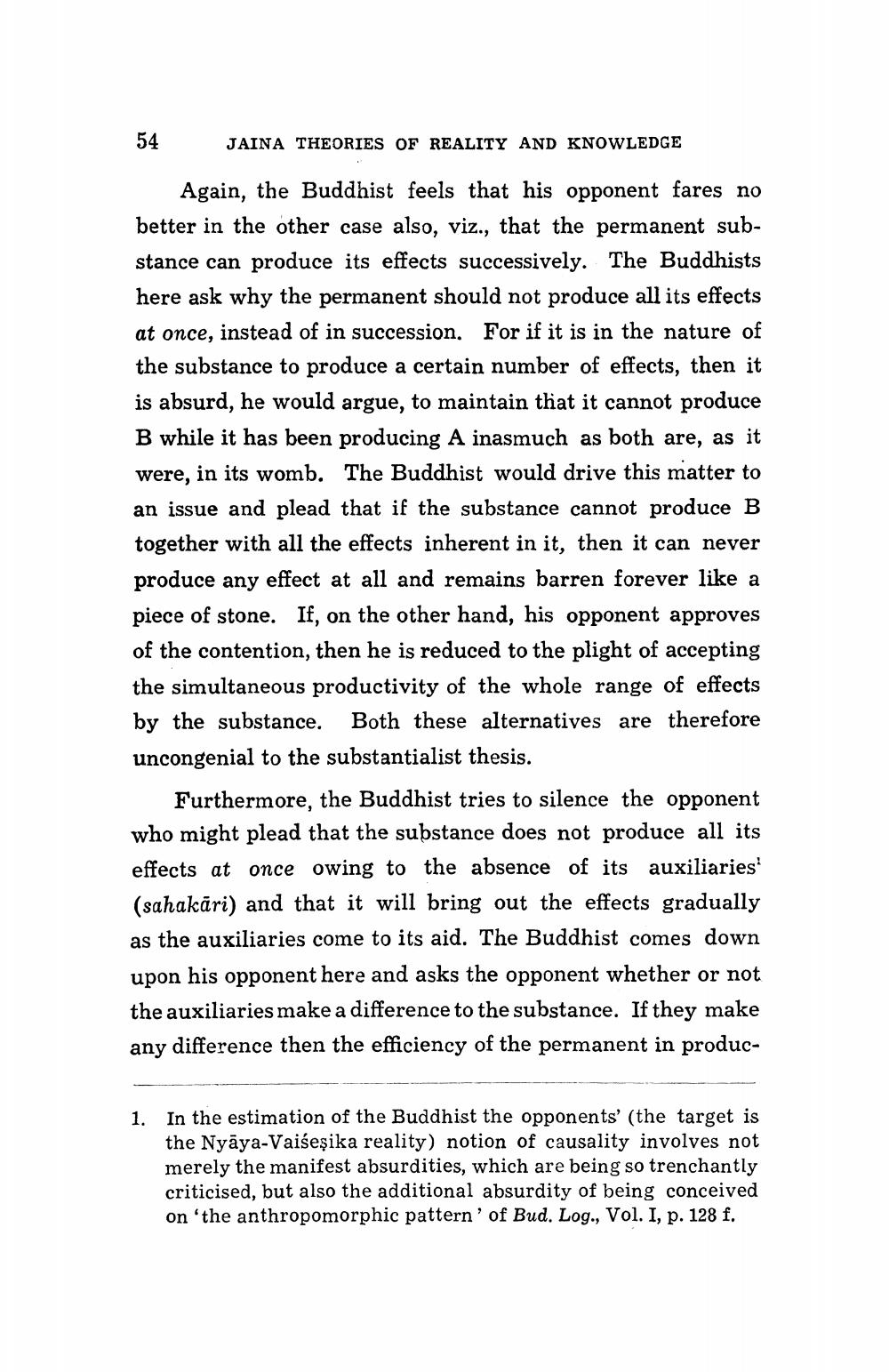________________
54
JAINA THEORIES OF REALITY AND KNOWLEDGE
Again, the Buddhist feels that his opponent fares no better in the other case also, viz., that the permanent substance can produce its effects successively. The Buddhists here ask why the permanent should not produce all its effects at once, instead of in succession. For if it is in the nature of the substance to produce a certain number of effects, then it is absurd, he would argue, to maintain that it cannot produce B while it has been producing A inasmuch as both are, as it were, in its womb. The Buddhist would drive this matter to an issue and plead that if the substance cannot produce B together with all the effects inherent in it, then it can never produce any effect at all and remains barren forever like a piece of stone. If, on the other hand, his opponent approves of the contention, then he is reduced to the plight of accepting the simultaneous productivity of the whole range of effects by the substance. Both these alternatives are therefore uncongenial to the substantialist thesis.
Furthermore, the Buddhist tries to silence the opponent who might plead that the substance does not produce all its effects at once owing to the absence of its auxiliaries' (sahakari) and that it will bring out the effects gradually as the auxiliaries come to its aid. The Buddhist comes down upon his opponent here and asks the opponent whether or not the auxiliaries make a difference to the substance. If they make any difference then the efficiency of the permanent in produc
1. In the estimation of the Buddhist the opponents' (the target is the Nyaya-Vaiśeşika reality) notion of causality involves not merely the manifest absurdities, which are being so trenchantly criticised, but also the additional absurdity of being conceived on 'the anthropomorphic pattern' of Bud. Log., Vol. I, p. 128 f.




